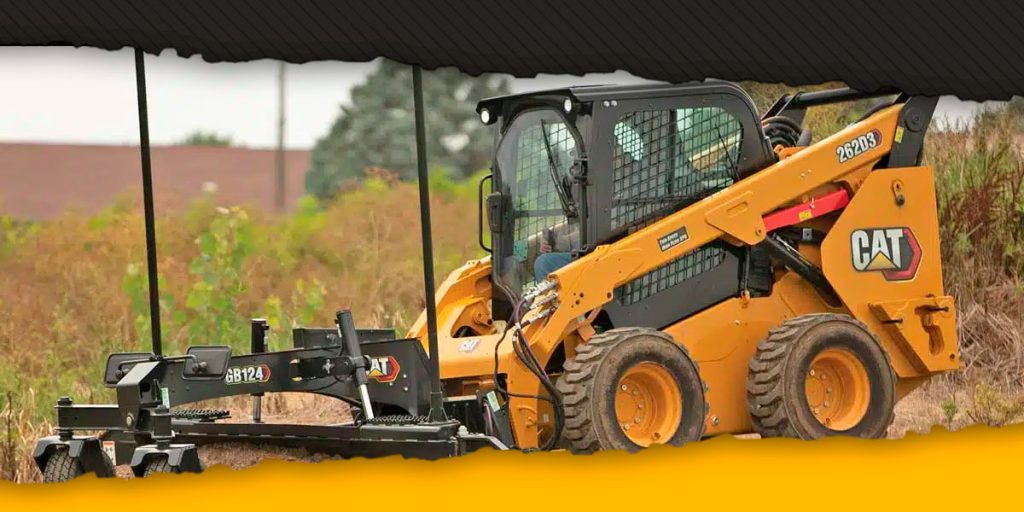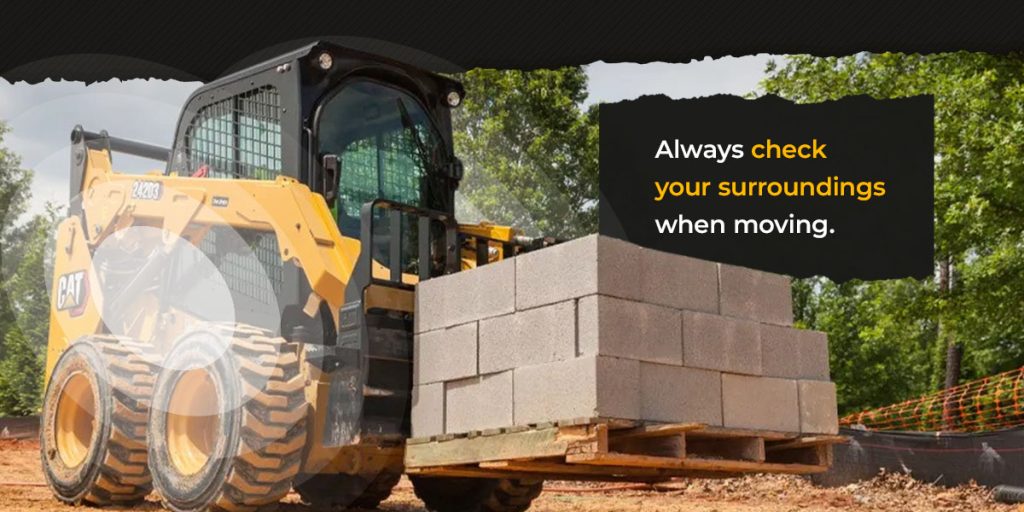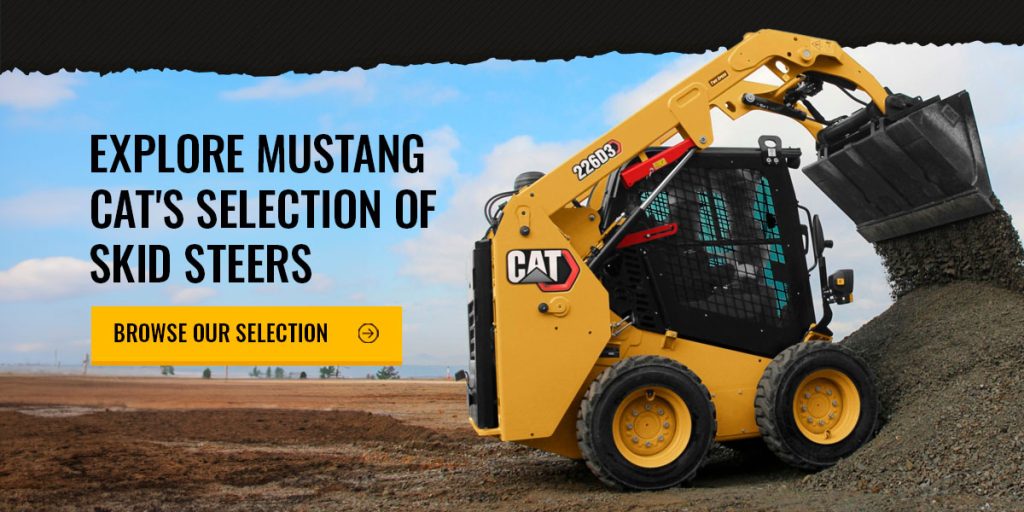How to Prevent Skid Steer Loader Injuries

Operating a skid steer loader can be challenging and dangerous without the right knowledge and precautions. Although these machines are essential on several jobsites, they pose several risks, such as rollovers, crush hazards and pinning hazards. Being mindful of and adhering to safety protocols before, during and after driving a skid steer is vital for operator well-being.
Potential Hazards When Operating a Skid Steer
Skid steer loaders are incredibly useful machines in various industries because of their compact size and maneuverability. However, their versatility also brings certain risks, such as:
- Rollovers: Skid steers have a high center of gravity, which makes them prone to tipping. This is especially true when operating on uneven terrain, handling heavy or unbalanced loads or making sharp turns at high speed. A rollover can result in serious injury or death, particularly if the operator isn’t wearing a seatbelt or the loader is not equipped with a rollover protective structure (ROPS).
- Crushing: When the loader tips over or if an operator or bystander is caught between the loader and another object, it can result in crushing.
- Pinning: Pinning happens when an operator or worker becomes trapped between the bucket and the frame or between the lift arm and the frame. This incident can also occur when the skid steer is used in confined spaces or near other equipment, in which the operator gets pinned between the loader and another object like a wall, vehicle or piece of machinery.
- Runover: Compromised visibility or a lack of proper signaling and communication on the jobsite often results in runovers.
How to Prevent Injuries When Operating a Skid Steer
Take the following steps to maintain a safe working environment while using a skid steer:
Before Operation
Proper inspection and preparation before driving the machine ensure it’s in good working condition and you’re ready to operate it safely.
- Check the control interlocks: These safety mechanisms prevent the loader from being used unless you are properly seated and all safety checks are in place. Before starting the machine, check that the loader will not move unless the seatbelt is fastened and that you are seated.
- Assess your surroundings: Once inside, you will have a limited view of your surroundings. Before getting inside the loader, look for obstacles, uneven ground and the presence of other workers or equipment.
- Inspect the machine: A pre-operation inspection helps identify any issues that could prevent your skid steer from working properly. Perform a comprehensive walk-around of the loader. Check for fluid leaks, tire damage and any signs of wear or malfunction in the hydraulic system. If you find any issues, contact a technician to schedule repairs before operating the loader.
- Wear your seatbelt: Once you’ve entered the loader, fasten your seatbelt. This simple but effective step prevents you from getting ejected from the cab during an accident.
Anyone operating a skid steer should have extensive training on how to do so properly. Construction managers must make sure operators complete training and provide ongoing education and support to keep their skills and knowledge updated. In many cases, employers are required by OSHA to train operators on safely using equipment, including skid steer loaders.
During Operation
Here’s what to keep in mind while driving a skid loader:

- Maintain a safe distance: Crowded worksites increase the risk of incidents, especially when multiple machines are in operation. Be aware of the loader’s proximity to other objects and people. Keep a safe working perimeter and communicate with other workers to coordinate movement.
- Avoid slopes: Operating on slopes is a common cause of construction injuries. Skid steers are not designed to handle steep inclines, particularly when carrying heavy loads. If you must operate on a slope, keep the heaviest part of the machine uphill to reduce the risk of tipping. Move slowly and avoid sudden turns or stops. If the hill is too steep, find an alternative route or method to complete the task.
- Use caution when lifting: Keep loads as low to the ground as possible and move at a controlled speed.
- Be aware of blindspots: Skid steers offer limited visibility, particularly to the rear and sides. Always check your surroundings when moving.
- Stay alert: Remain focused and avoid distractions. Fatigue and a lack of attention can lead to accidents.
Remember to never operate the skid steer loader from outside the cab. The cab has protective structures, like the ROPS and falling-object protective structure (FOPS), designed to protect you from rollovers or falling objects. Operating from outside the cab exposes you to these dangers and increases the risk of accidents.
After Operation
Once you’re done using the loader, follow these steps to ensure the machine is stored safely and ready for the next use.
- Park safely: Park the machine on level ground.
- Lower the attachments: Always lower the attachments before exiting the machine.
- Turn off the engine: Ensure the engine is off and the parking brake is applied.
Cat® Skid Steer Features for Safe Operations
The kind of machine you use can impact operation. While understanding how to operate a skid steer correctly and following the right operation steps are crucial, a well-maintained loader with the right safety features can be equally as important for operator and jobsite safety. Caterpillar manufactures a wide range of loaders with advanced safety features that can help promote safer operations:
- ROPS and FOPS: ROPS minimizes the risk of injury during rollovers, while FOPS protects against falling debris so you remain safe in high-risk construction zones.
- Control interlocks: The control interlock system means the operator can’t use the machine until they’re properly seated with the seatbelt fastened. This system effectively prevents accidental loader movement.
- Ergonomic design: Another practical and efficient feature, Cat® skid steers come with adjustable seats and well-placed controls so you can work comfortably for extended periods without fatigue.
- User-friendly features and visibility: With exceptional visibility and intuitive controls, Cat loaders are user-friendly for both new and experienced operators. They minimize blind spots, which is essential when operating in tight spots or around other workers.
- Intelligent leveling system: This system provides dual-direction self-leveling, work tool return-to-dig and work tool positioner capabilities. This feature helps maintain precise control over the machine’s load, allowing you to complete tasks accurately and efficiently.
- Speed-sensitive ride control system: Another standout feature, this system improves operation on rough terrain and enhances load retention, which increases productivity when working in challenging conditions.

Explore Mustang Cat’s Selection of Skid Steers
At Mustang Cat, we understand the safety and efficiency implications of operating skid steer loaders. That’s why we offer a range of Cat fleets with the latest safety features and technologies.
With over 70 years of experience in the industry, we are committed to providing reliable and user-friendly equipment that meets the highest safety standards. Whether you’re looking to rent equipment for a short-term project or purchase one for long-term use, we have the right machine for you.
Browse our selection of new and used Cat skid steers today or contact your local dealership to get started.


